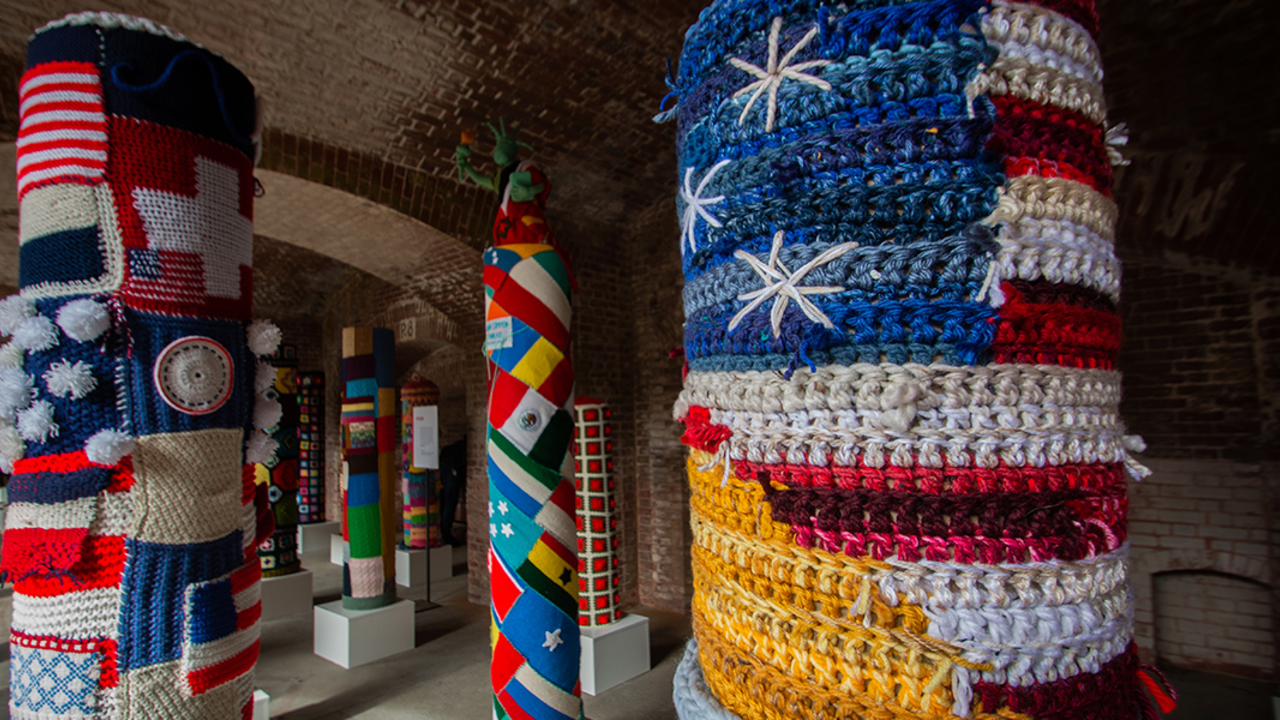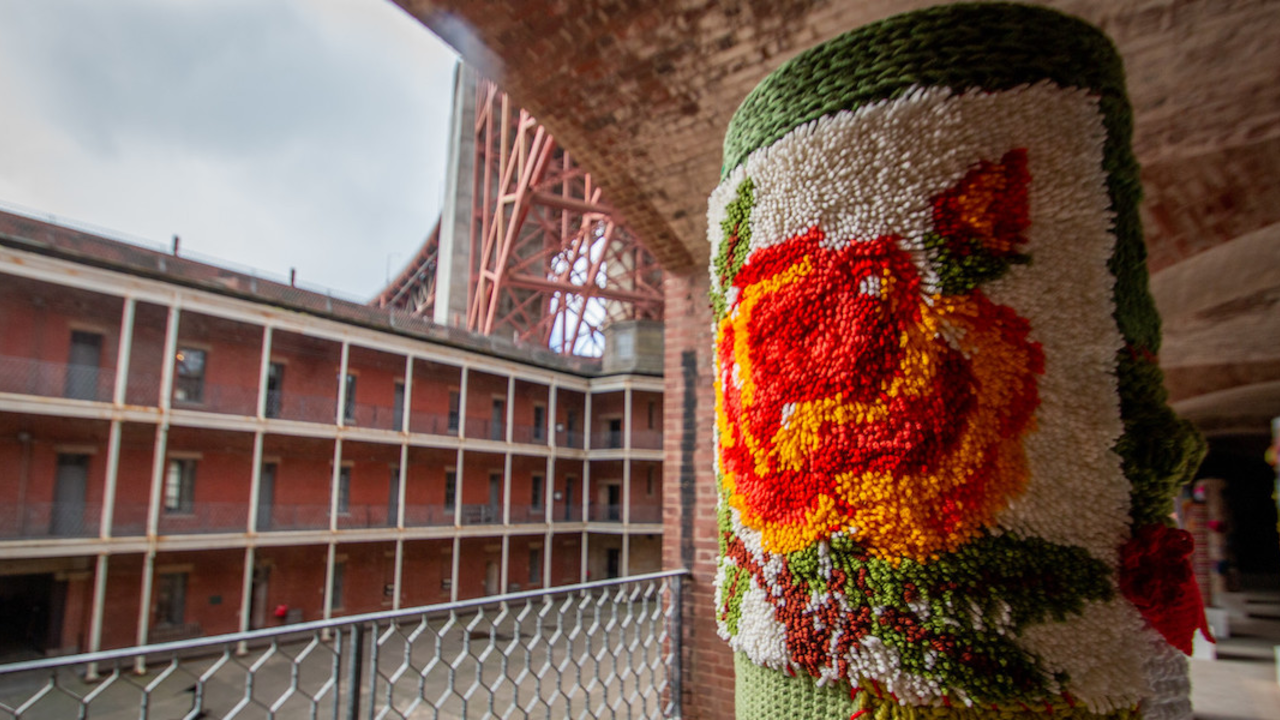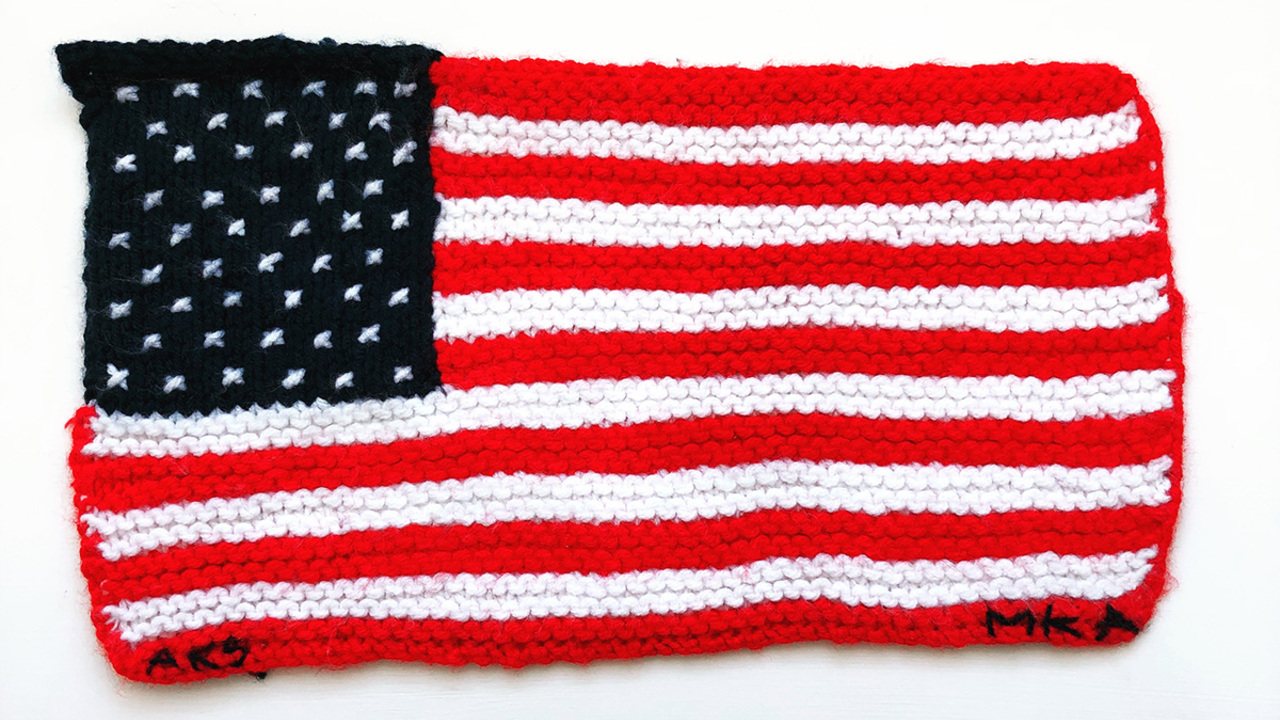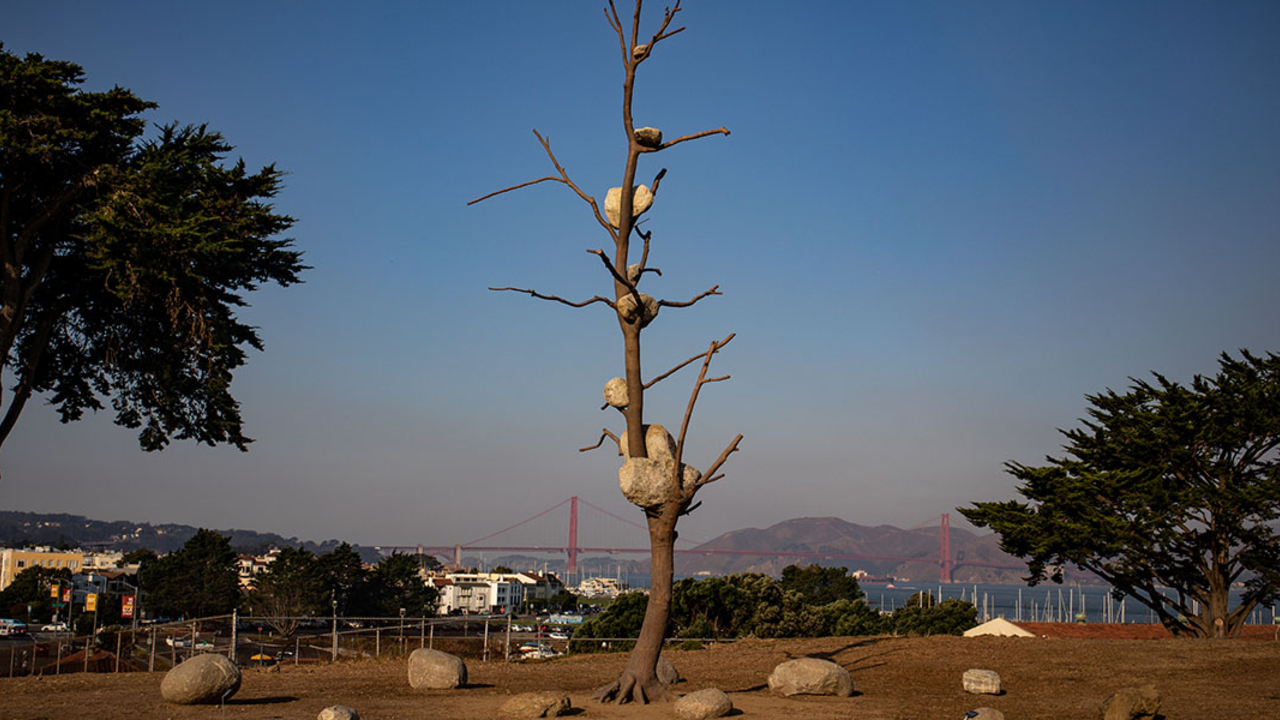Immigrant Yarn Project reminds us why we make programs ‘For All’

Ryan Curran White/Parks Conservancy
By San Francisco Park Stewardship Interns
One of the best parts about living in America is the ability to interact with people whose ancestry hails from all parts of the world. New York City is a great example of this, because there, diversity of backgrounds and languages is something you can’t really get away from. In that way, San Francisco is the New York of the West—it’s a gateway into America.
This diversity was reflected in the Immigrant Yarn Project, an exhibit of the Art in the Parks program at Fort Point National Historic site. Created by a team of artists including Cindy Weil, Raquel Ramirez, Varsha Rao, Yolanda We, and Kristine Arth, the exhibit reflected Fort Point’s immigration history. The exhibit consisted of several totems covered in colorful patches of yarn. Each patch was knit by a different individual or group, ranging from all different backgrounds—Native American, immigrant, LGBTQA, homeless, children, adults. It was a colorful, patchwork display that stood in stark contrast to the bare walls of Fort Point.
Standing at Fort Point, surrounded by these totems, was a reminder of our weekly community volunteer programs where we are hoping to create a space to honor native people, and all the migrant cultures that represent the Bay Area. We start our programs by offering a land acknowledgement, bringing attention to the many years of care and work by the native Ohlone people. Our team is composed of someone of Colombian descent, someone with mixed Korean and Italian heritage, someone of Hindu Indian descent, and someone who is a Muslim Indian immigrant. During our program, we hear countless languages spoken in our park from Spanish to Chinese to Gujarati. Even our volunteers come from all over, some only recent immigrants to the United States, some who can trace their ancestry to the first settlers, and some whose ancestors have lived and worked on this land long before it was San Francisco.
Just as the Bay Area is a biodiversity hotspot, it is also a cultural diversity hotspot, and both can be seen throughout our parks. The Golden Gate National Parks are the most visited national park sites in the country. To this day the parks attract people from all over the globe, continuing the legacy of the Bay Area as an entry point into a new world. Only this new world is not America as we know it, but the parts of America we’ve left somewhat wild. Through stewarding the natural lands in this area, we can not only learn about the variety of plants and animals we have around us, but also about the people. As a space for all to enjoy, the parks in our area allow us to encounter the earth and the people who inhabit it, making connections with each other through the one thing we all have in common—the land we live on. The Immigrant Yarn Project was a reminder of the diversity that is found throughout our city and throughout nature.
We are extremely lucky to live and work in San Francisco. Where better to see a mix of biodiversity and people diversity than in our parks? So, come, join us in our park art exhibits to see history and culture in the place where it happened. Come hear and see the product of hundreds of years of immigration and see the beauty it has brought with it.


